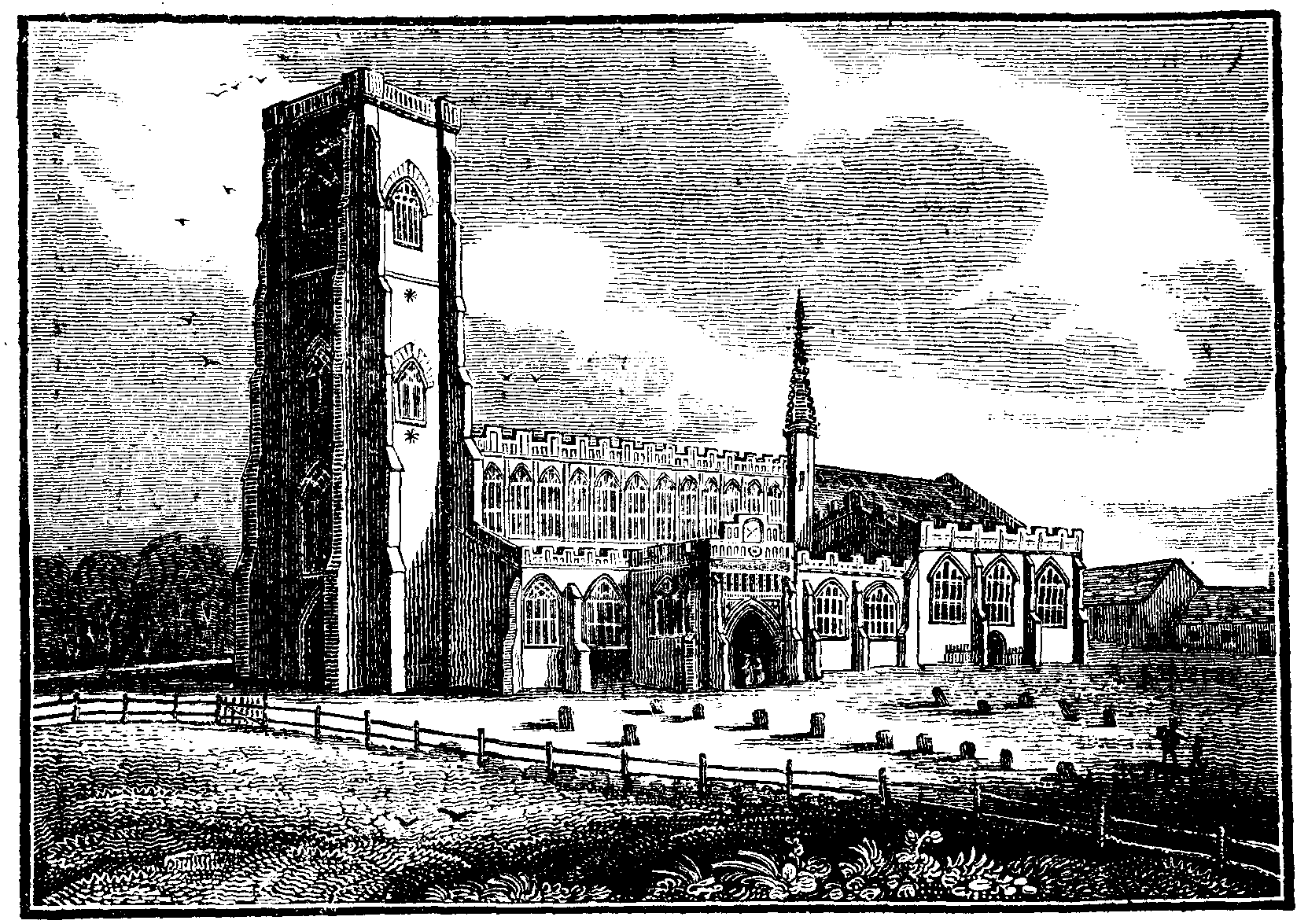THE MIRROR
OF
LITERATURE, AMUSEMENT, AND INSTRUCTION.
| Vol. 12. No. 335.] | SATURDAY, OCTOBER 11, 1828. | [PRICE 2d. |
LAVENHAM CHURCH.
Lavenham, or Lanham, a small town north of Sudbury, was once eminent forits manufactures, when there were eight or nine cloth-halls in the place,inhabited by rich clothiers. The De Veres, Earls of Oxford, whose namesare blazoned in our history, held the manor from the reign of Henry I.till that of Elizabeth, and one of the noble family obtained a charterfrom Edward III. authorizing his tenants at this place to pass toll-freethroughout all England, which grant was confirmed by Elizabeth. But themanufacturing celebrity of Lavenham has dwindled to spinning woollen yarn,and making calimancoes and hempen cloth; the opulent clothiers haveshuffled off their mortal coil, and proved that “the web of our life is ofa mingled yarn, good and ill together.”
The church of Lavenham is, however, a venerable wreck of antiquity, and isaccounted the most beautiful fabric of the kind in Suffolk. It is chieflybuilt of freestone, the rest being of curious flintwork; its total lengthis 150 feet, and its breadth 68. From concurrent antiquarian authoritieswe learn that the church was built by the De Veres, in conjunction withthe Springs, wealthy clothiers at Lavenham. This is attested by thedifferent quarterings of their respective arms on the building. The porchis an elegant piece of architecture, very highly enriched with theshields, garters, &c. of many of the most noble families in the kingdom,among which are the letters I.O., probably intended for the initials ofJohn, the 14th Earl of Oxford, who married the daughter of Thomas Howard,Duke of Norfolk. He is conjectured to have erected this porch.
In the interior, the roof is admirably carved, and the pews belonging tothe Earls of Oxford and the Springs, though now much decayed, werehighly-finished pieces of Gothic work in wood. Some of the windows arestill embellished with painted glass, representing the arms of the DeVeres and others. Here also is a costly monument of alabaster and gold,erected to the memory of the Rev. Henry Copinger,1 rector of Lavenham,with alto-relievo [pg 226]figures of the reverend divine and his wife.
In the north aisle is a small mural monument, upon which are represented aman and woman, engraved on brass, kneeling before a table, and three sonsand daughters behind them. From the mouth of the man proceeds a label, onwhich are these words:—In manus tuas dne commendo spiritum meum.Underneath is this inscription, which, like that of the label, is in theold English character:—
Contynuall prayse these lynes in brasse,
Of Allaine Dister here,
A clothier, vertuous while he was
In Lavenham many a yeare.
For as in lyefe he loved best
The poore to clothe and feede,
So with the rich and all the rest
He neighbourlie agreed;
And did appoynte before he dyed,
A spe
